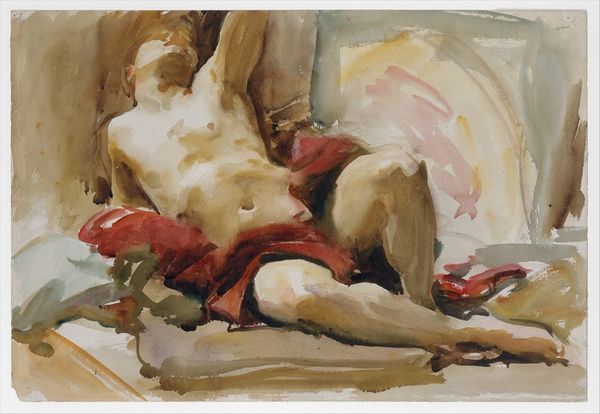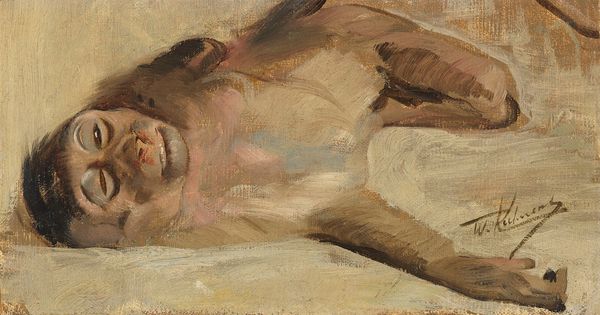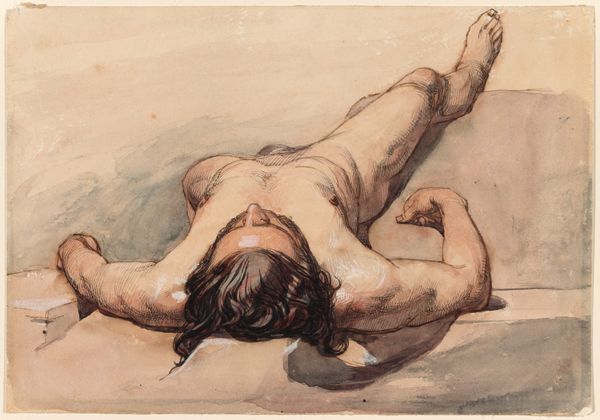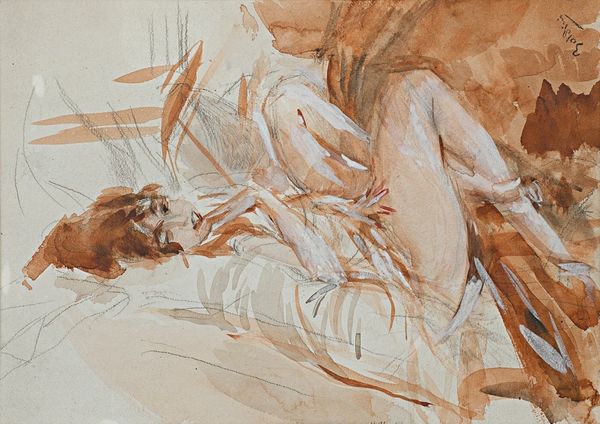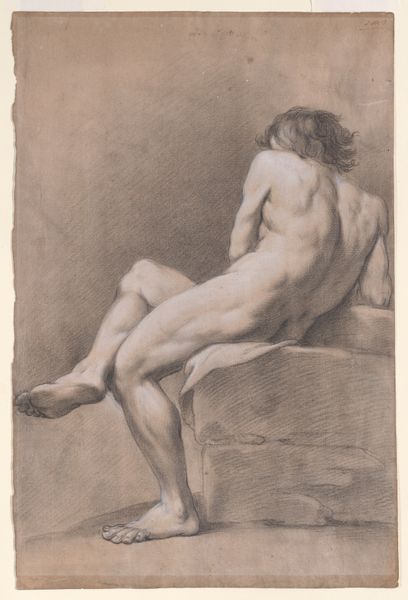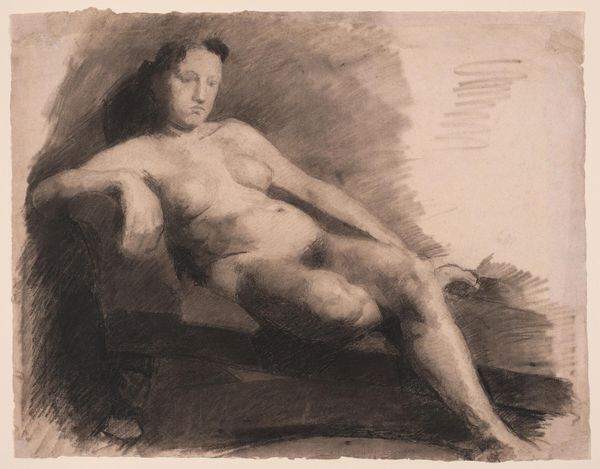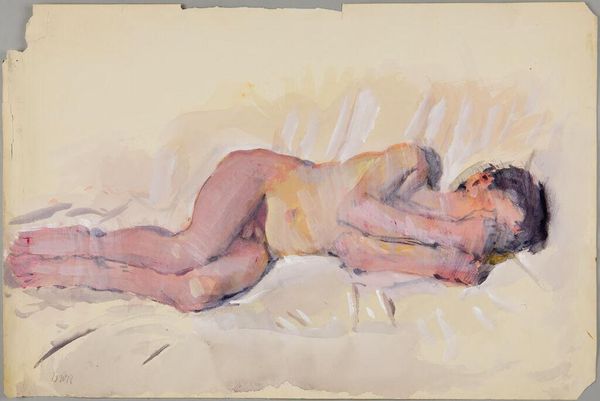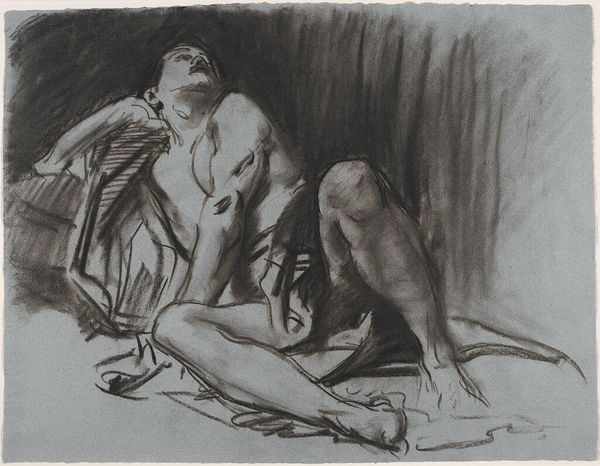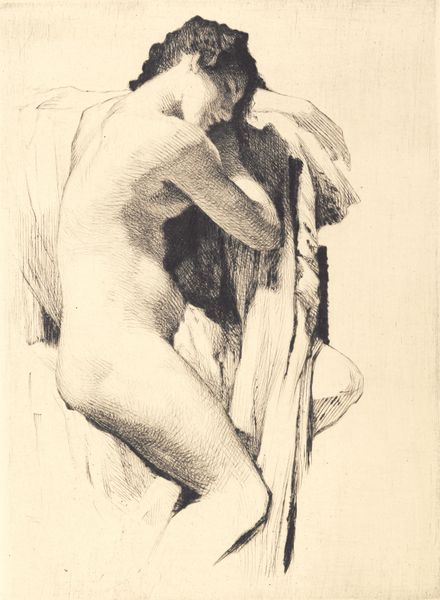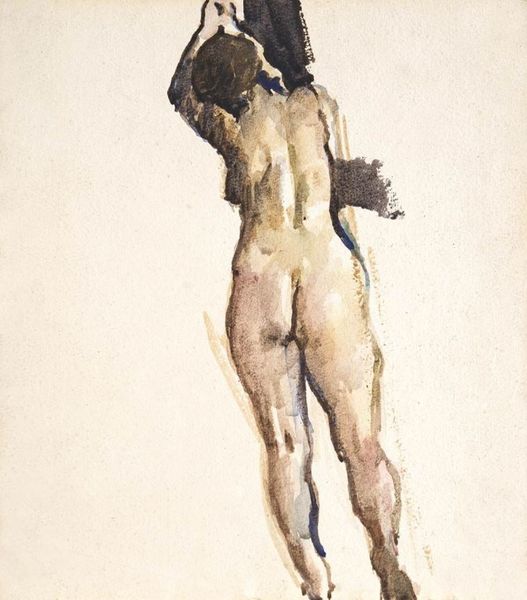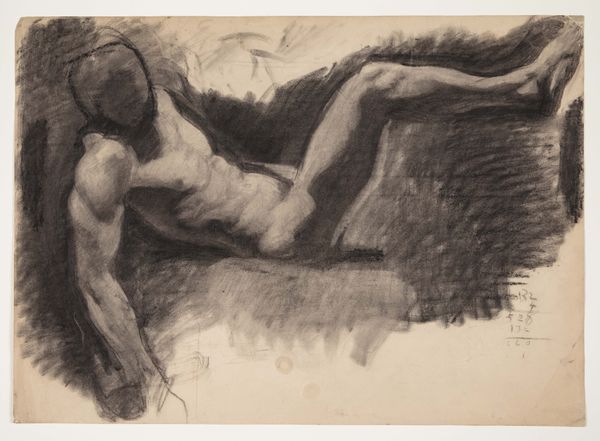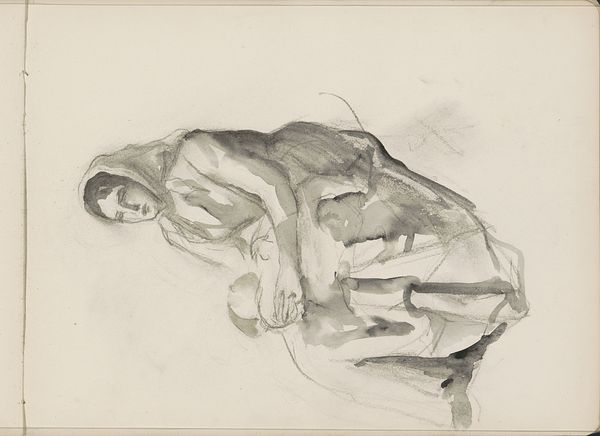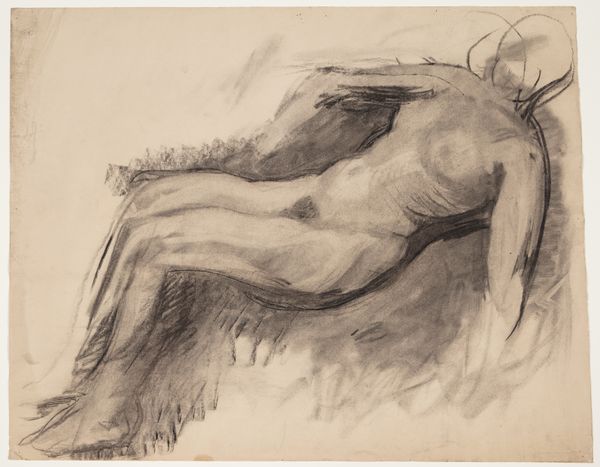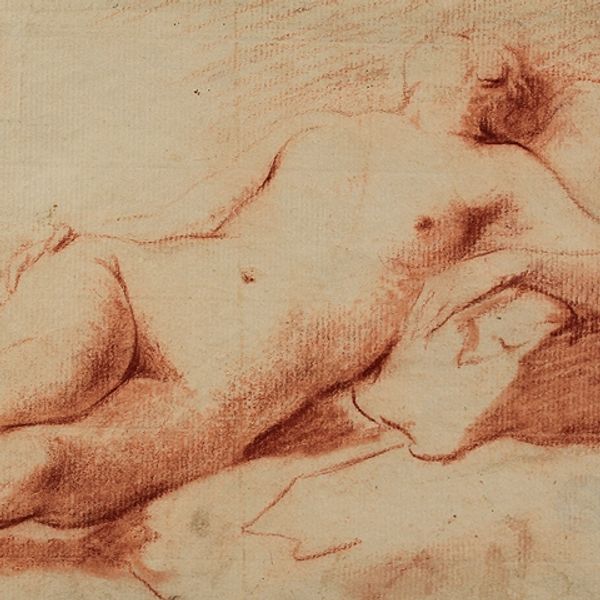
Copyright: Public Domain: Artvee
Editor: Here we have John Singer Sargent’s “Italian Model,” made with watercolor sometime after 1900. I’m really struck by how loose and gestural the brushwork is. It's almost like a fleeting impression, but there's still a sense of the figure's weight and form. What stands out to you most about this piece? Curator: Well, immediately I'm thinking about the male gaze inherent in portraying a reclining nude figure, and Sargent's positioning within that tradition. The work's title, "Italian Model," almost feels like a deliberate distancing. By naming the figure by nationality rather than an individual identity, what implications arise about power dynamics and the objectification of the model, a figure often marginalized and rendered invisible in art historical narratives? Editor: That's a really interesting point. I hadn't thought about the power dynamics at play in the title itself. It makes you wonder who this person really was. Curator: Exactly. And, thinking about the Impressionistic style, what is being impressed and whose experience is deemed important? Consider how class, race, and gender were portrayed, or rather, unrepresented, by the male impressionists and those in their circles. Even the very act of capturing the ‘fleeting moment’ has political implications. Editor: So, it's not just about aesthetics but about who has the power to represent whom and how that representation shapes our understanding of identity and culture. Curator: Precisely. Sargent, a successful portraitist, was certainly aware of the societal frameworks framing his paintings. It makes me wonder what he was consciously attempting to communicate, or perhaps unconsciously revealing, about early twentieth-century ideals of beauty, labor, and the construction of otherness. Editor: This makes me see this work in a totally different light now! Thank you! Curator: My pleasure.
Comments
No comments
Be the first to comment and join the conversation on the ultimate creative platform.
